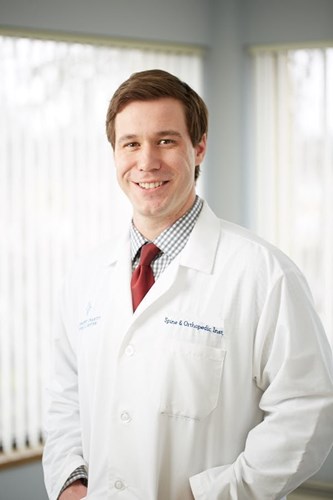To schedule an appointment, call 216-676-1234.
Are you suffering from joint and muscle pain as a result of a New Year’s Resolution to get fit and perhaps lose some weight? If so, you are not alone.
“Every year, millions of Americans wake up New Year’s Day resolved to start exercising and get in shape,” said Dr. George Friedhoff, sports medicine specialist at St. Vincent Charity Medical Center. “Unfortunately, too many go from 0 to 60 on day one, and then end up with overuse injuries, stress fractures or muscle pain.”
Starting in late January and early February every year, Dr. Friedhoff begins to see an influx of patients suffering from overuse injuries caused by starting their New Year’s exercise regime too aggressively. These injuries are one factor that leads to the more than 80 percent of those who make a resolution to exercise falling off the wagon by early February.
However, Dr. Friedhoff said the majority of these strains and pains do not need to make your New Year’s Resolution come to a screeching halt. Rather, he advises patients on how to change their exercise program, allow the body rest and then set manageable training goals. 
Dr. Friedhoff’s patient tips include:
- Listen to your body. When you begin to feel muscle and joint pain with a new exercise program, this is your body telling you it is too much. If you wake up the day after training and you feel severe pain and stiffness, it is a sign that you may be starting out too hard. Your heart rate during exercise is also your body’s own guide to know the intensity of exercise you can handle.
- Allow for rest. If you are experiencing pain from overuse, it is important to give the body a rest so it can recover. In some cases, Dr. Friedhoff said, that may mean taking a week off from regular exercise. However, so that one week off doesn’t throw patients completely off their program, he recommends stretching and isometric exercises to help relieve the strains. He also recommends using this week to begin some form of cross training, such as swimming or biking if you happen to be a runner. If pain does not resolve itself during this period, it might be time to see a doctor to diagnose the injury.
- Moderately increase intensity and duration. Once the body has had a chance to recover from overuse, Dr. Friedhoff advises patients to restart their exercise program at 40 percent of what they were doing when the injury or pain began. Then, each week, increase exercise by no more than 10 percent. This allows the body time to adjust and build strength over time.
- Map out a reasonable training plan with variety of exercise. Friedhoff recommends mapping out a three to four month training plan, with manageable goals along the way. Practical goals and weekly workout plans enable patients to achieve success and confidence to keep them engaged in their program. He also recommends mixing up training each day, incorporating strength training, swimming, biking or yoga into the routine, to keep one motivated – and not bored – by their exercise program.
This year, Dr. Friedhoff found himself following his own advice. Dr. Friedhoff started training January 1 for his fourth Cleveland Marathon, running four times a week. During the second week, he started to develop lower back pain.
“I didn’t want the pain to get worse, so I turned to what I always tell my patients,” he said. “I shut everything down for a week, and focused on the low back hip stabilization exercises I provide patients with lower back pain. I worked in cross training and slowly built up my intensity following the 10 percent rule.”
As a result of this program, Dr. Friedhoff is now back to full training, even recently running 12 miles, pain free, one day during a Cleveland winter snowstorm.
To learn more or schedule an appointment with Dr. George Friedhoff of the Spine and Orthopedic Institute at St. Vincent Charity Medical Center, call 216.676.1234.
To schedule an appointment, call 216-676-1234.



